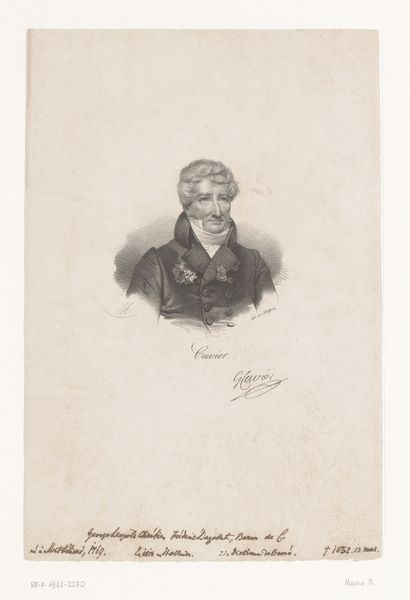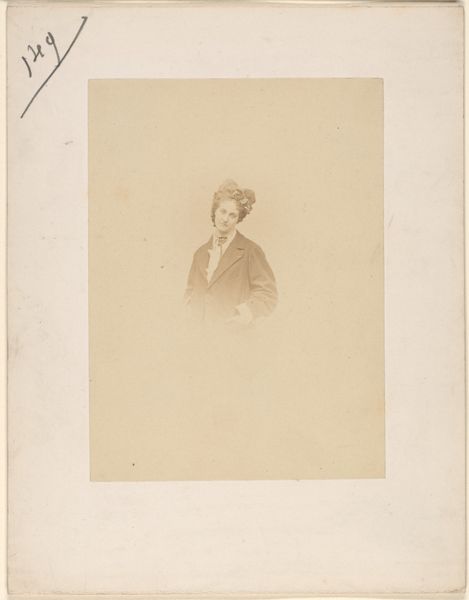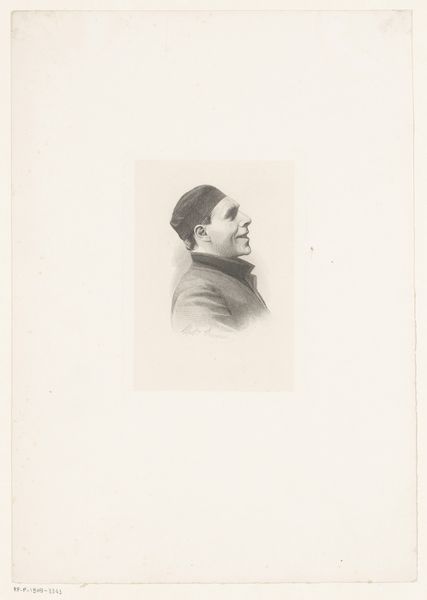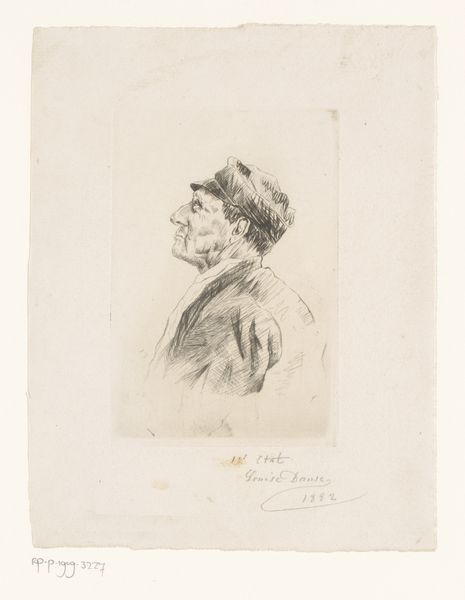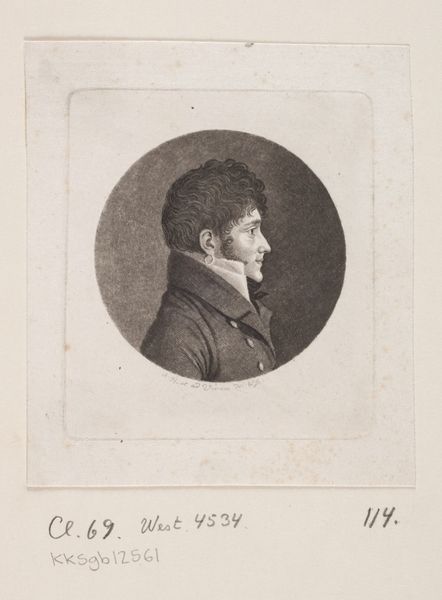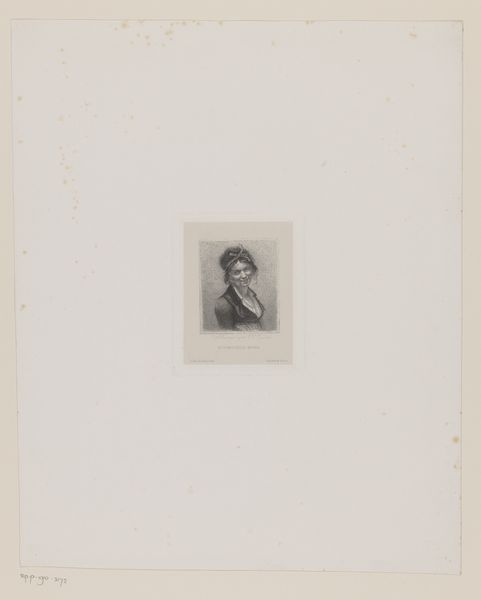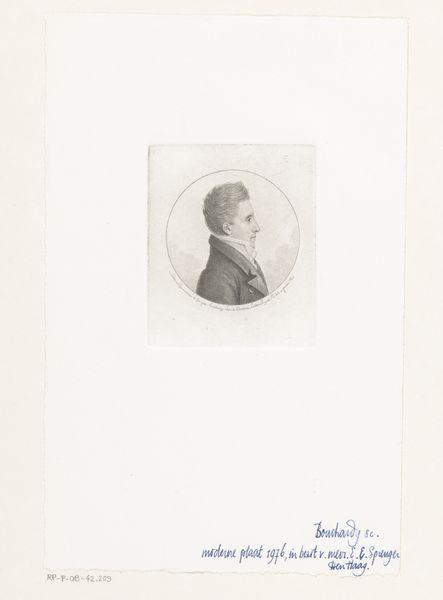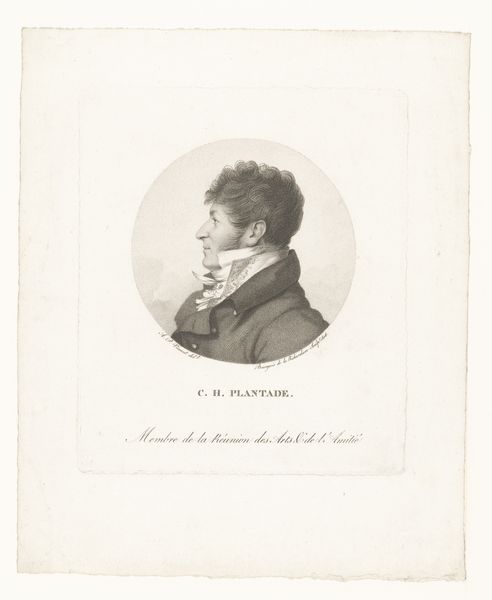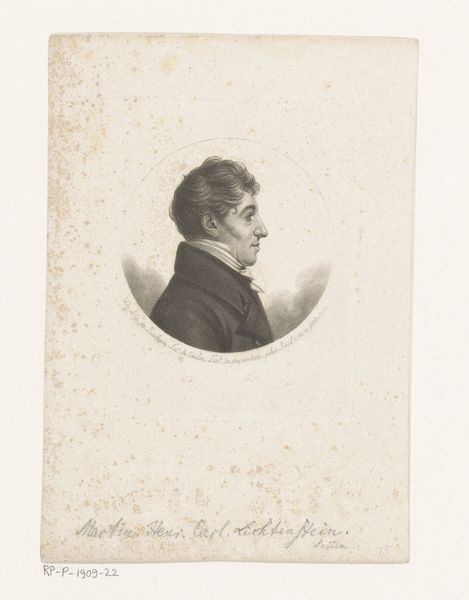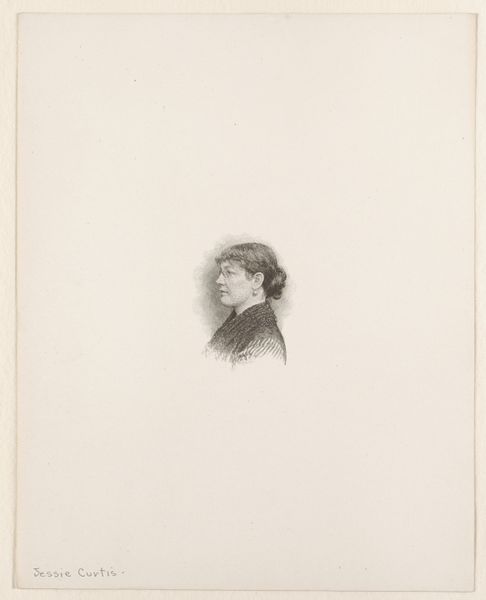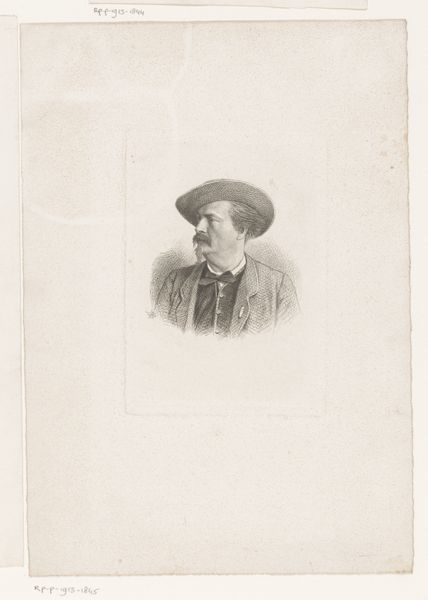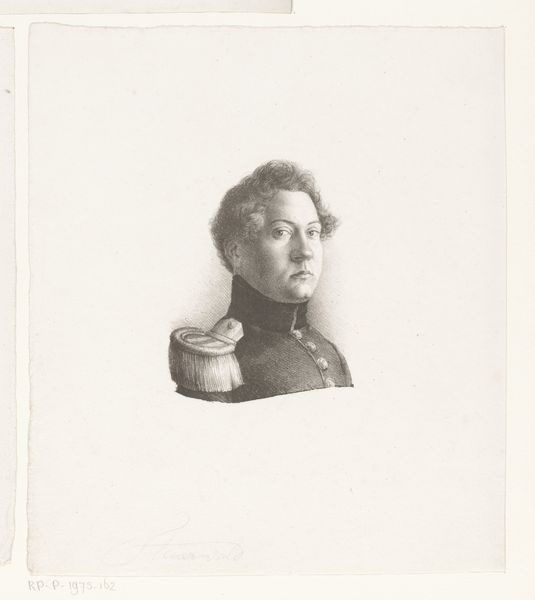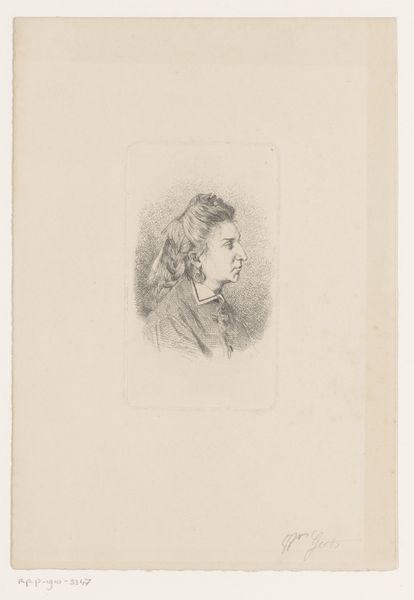
print, engraving
#
portrait
# print
#
romanticism
#
line
#
engraving
Dimensions: height 380 mm, width 260 mm
Copyright: Rijks Museum: Open Domain
This portrait of W. van der Monde was made with an unknown medium by an anonymous artist. The portrait shows a man in profile, typical of its time. But what does it tell us about the social and cultural environment in which it was produced? The Netherlands, during the late 18th and early 19th centuries, was undergoing significant social and political change. From the Batavian Republic, influenced by the French Revolution, to the Kingdom of the Netherlands, society was grappling with new ideas about citizenship and governance. Portraits such as this one, were less about celebrating aristocratic power, and more about representing the emerging middle class. The creation of such portraits—and their preservation in public collections—reflects an evolving understanding of who is worthy of remembrance and why. It is thanks to the work of historians examining archives, letters, and other period documents that we can understand not only the sitter but also the values and beliefs of the society that produced this image.
Comments
No comments
Be the first to comment and join the conversation on the ultimate creative platform.
